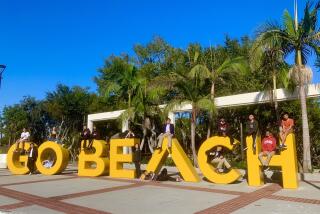Cal State trustees to discuss enrollment management, budget gaps and executive compensation

Cal State faces difficult problems that don’t seem likely to disappear soon. The state covers a smaller proportion of its costs than it used to, and the number of students who want to attend keeps growing — with demand particularly high for certain popular campuses and programs.
The trustees of the nation’s largest public university system will be discussing how to make progress on both fronts when they meet in Long Beach, starting Tuesday.
In the 2017-18 budget, Gov. Jerry Brown gave the university system more money than he initially proposed. But Cal State officials also had to commit to get to work on its enrollment problems. They have until May to develop a policy to redirect applications turned away from crowded campuses to those that are less crowded, as long as they meet systemwide requirements.
Officials also have to put a policy in place to require Cal State campuses to give local students priority admission for undergraduate majors and programs that receive more qualified applicants than can be accommodated by faculty, staff and campus resources. At Cal State L.A., for example, these “impacted programs” include biology, criminal justice, psychology and social work.
The number of eligible applicants for Cal State continues to outpace state support and campus capacity. About 31,000 fully qualified students were turned away for the fall term because their desired campuses had no more room, administrators said. After months of lobbying by faculty, students and staff, Brown this summer signed off on a $20-million boost aimed at enrolling about 3,000 more students.
Trustees will discuss enrollment plans as well as Cal State’s operating budget for next year, which will be finalized in November. Officials project that the state will provide an additional $102 million for next year’s budget, which is still short of what Cal State leaders say they need for such priorities as improving graduation rates, increasing enrollment and updating aging buildings.
If CSU faces a budget gap, administrators wrote in a memo, trustees would have to consider various options, including pushing harder for state funding, investing less in new priorities, looking for systemwide cost savings and even another tuition increase. Earlier this year, after lengthy debates, trustees voted to increase tuition by about 5% — the first hike since 2010-11.
The board is also expected to vote on a proposed 2.5% salary increase for Chancellor Timothy P. White, six vice chancellors, and the system’s campus presidents. Sally Roush, who was appointed interim president of San Diego State in the spring, would not get an increase.
Executive compensation has been a thorny issue in the past: The system took heat in 2011 when trustees approved both a $100,000 boost in pay for the incoming San Diego State president and a 12% tuition hike. The following year, Cal State froze compensation paid with state funds while allowing increases of up to 10% paid with private donations. In November 2015, to quell criticism, the trustees voted to eliminate the use of private funds to supplement salaries.
From 2010 to 2014, according to officials, executives received no salary raises. In the 2014-2015 budget year, trustees approved a 3% increase, followed by a 2% increase in 2015-2016 and a 2% increase in 2016-2017.
Officials had long argued that restricting compensation puts the system at a competitive disadvantage.
White’s salary, after the 2.5% increase, would total $450,345. Cal State campus president salaries would range from $274,601 at the Maritime Academy to $428,645 at San Diego State.
Also on the trustees’ agenda are discussions about the system’s financial reserves, building plans and maintenance priorities for the next five years and a report on research grants and opportunities. Collectively, Cal State campuses received more than $579 million in research grant funding in 2015-2016.
A live stream of the open sessions can be viewed here.
Follow @RosannaXia for more education news
More to Read
Start your day right
Sign up for Essential California for news, features and recommendations from the L.A. Times and beyond in your inbox six days a week.
You may occasionally receive promotional content from the Los Angeles Times.







